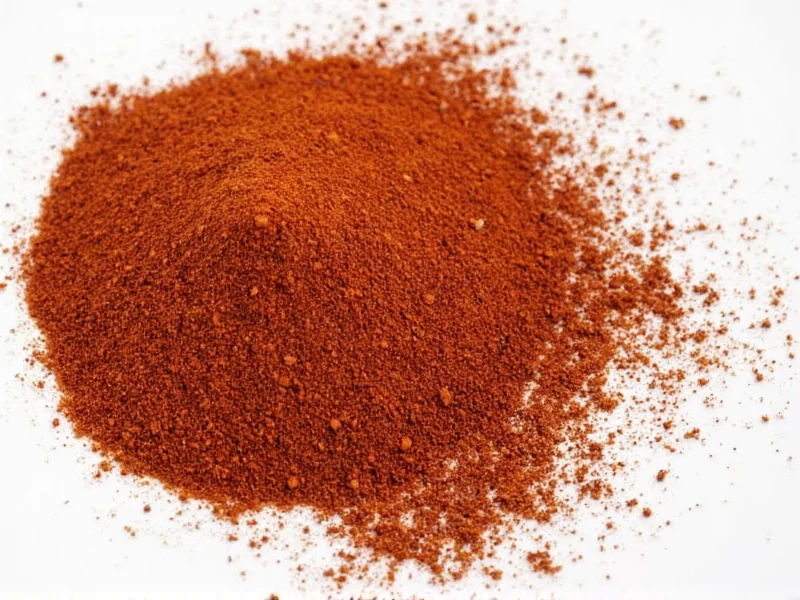Sumac's unique flavor profile makes it challenging to replace, but understanding its characteristics helps identify effective alternatives. This deep red spice, made from ground sumac berries, delivers a tangy, lemon-like acidity with subtle earthy notes and a hint of floral complexity. Unlike pure citrus, sumac offers a more nuanced tartness without overwhelming moisture, making it indispensable in Middle Eastern, Mediterranean, and Levantine cuisines.
Why Finding the Right Sumac Substitute Matters
Using an inappropriate substitute can dramatically alter your dish's flavor balance. Sumac's pH level sits between vinegar and lemon juice but with less liquid content, making direct liquid substitutions problematic. Professional chefs emphasize that the best sumac replacement maintains both the tartness and dry texture essential for proper seasoning distribution. When searching for a sumac spice substitute for chicken dishes or fattoush salad, consider how each alternative affects both flavor and texture.
Top 5 Sumac Spice Substitutes Ranked by Effectiveness
| Substitute | Ratio (vs 1 tsp sumac) | Best For | Flavor Match | Limitations |
|---|---|---|---|---|
| Lemon zest + paprika | 2/3 tsp zest + 1/3 tsp paprika | All-purpose use, marinades, dry rubs | ★★★★☆ | Slight color difference |
| Red wine vinegar + paprika | 1/2 tsp vinegar + 1/4 tsp paprika | Dressings, dips, wet applications | ★★★☆☆ | Adds moisture, not dry spice |
| Za'atar (sumac-free version) | 1:1 | Flatbreads, dips, sprinkling | ★★★☆☆ | Contains thyme, sesame |
| Amchoor (mango powder) | 3/4 tsp | Indian-Middle Eastern fusion | ★★★☆☆ | Sweeter profile |
| Citric acid + paprika | 1/4 tsp acid + 1/2 tsp paprika | Commercial applications | ★★☆☆☆ | Sharp acidity, less nuanced |
Detailed Substitute Analysis
Lemon Zest and Paprika Blend
This sumac replacement for Middle Eastern recipes delivers the closest flavor match. The lemon zest provides the essential tartness while paprika contributes earthiness and color. For best results, use fresh organic lemon zest (avoid the white pith) and high-quality sweet paprika. This combination works exceptionally well as a sumac spice substitute for chicken, particularly in shawarma and kebab marinades where sumac's acidity helps tenderize meat.
Vinegar-Based Alternatives
When moisture isn't a concern, red wine vinegar makes an excellent sumac alternative for salad dressing. Combine 1/2 teaspoon red wine vinegar with 1/4 teaspoon paprika for every teaspoon of sumac required. For fattoush salad specifically, add a pinch of cumin to this mixture to better replicate traditional flavor profiles. White wine vinegar or apple cider vinegar work as acceptable alternatives when red wine vinegar isn't available.
Za'atar as a Partial Substitute
While traditional za'atar contains sumac, you can create a sumac-free version using equal parts thyme, sesame seeds, and oregano. This blend works well as a finishing spice but lacks sumac's distinctive tartness. Use it when you need a dry spice substitute without citrus elements, particularly in bread seasonings or as a garnish.
Amchoor (Dried Mango Powder)
This Indian spice offers a similar tart profile with subtle fruity notes. Use 3/4 teaspoon amchoor for every teaspoon of sumac. It works particularly well in dishes where sumac's floral notes would complement other spices, such as in certain rice dishes or vegetable preparations. Amchoor provides a more rounded acidity compared to sumac's sharper tang.
Cuisine-Specific Substitution Guide
Middle Eastern Dishes
For traditional recipes like fattoush salad or muhammara, the lemon zest-paprika blend is your best sumac replacement. Add a tiny pinch of ground coriander to better mimic sumac's complexity in these applications. When preparing manakeesh (Levantine flatbread), za'atar makes an acceptable substitute since the bread's other ingredients help balance the flavor profile.
Meat Preparation
When substituting sumac in meat rubs, increase the paprika component slightly (to 40% of the blend) to compensate for sumac's natural meat-tenderizing properties. For grilled chicken or lamb, add the lemon zest-paprika mixture during the last 15 minutes of marinating to prevent the citrus from breaking down the proteins too much.
Salad Dressings and Dips
For wet applications like dressings or dips, use the vinegar-based substitute. When making a sumac alternative for salad dressing, whisk 1/2 teaspoon red wine vinegar, 1/4 teaspoon paprika, and a pinch of sugar to balance the acidity. This mixture works particularly well with olive oil-based dressings where sumac would normally provide the acidic component.
Pro Tips for Successful Substitution
Add dry substitutes like the lemon zest-paprika blend early in cooking to allow flavors to meld, while vinegar-based alternatives should be added near the end to preserve their bright acidity. When using any sumac spice substitute in fattoush salad, sprinkle it over the finished dish rather than mixing it throughout for the most authentic presentation. For long-term storage, keep your homemade substitutes in airtight containers away from light and heat to preserve flavor integrity.
When Substitution Isn't Ideal
Some traditional dishes like Iranian fesenjan or certain Persian rice preparations rely on sumac's specific chemical composition for proper texture and flavor development. In these cases, consider ordering sumac online rather than substituting, as the unique tannins in sumac contribute to the dish's final consistency. For most everyday cooking applications though, the substitutes outlined here will deliver excellent results without compromising your culinary creations.











 浙公网安备
33010002000092号
浙公网安备
33010002000092号 浙B2-20120091-4
浙B2-20120091-4